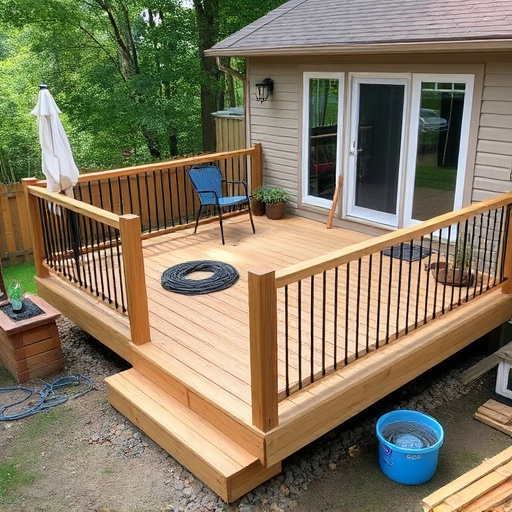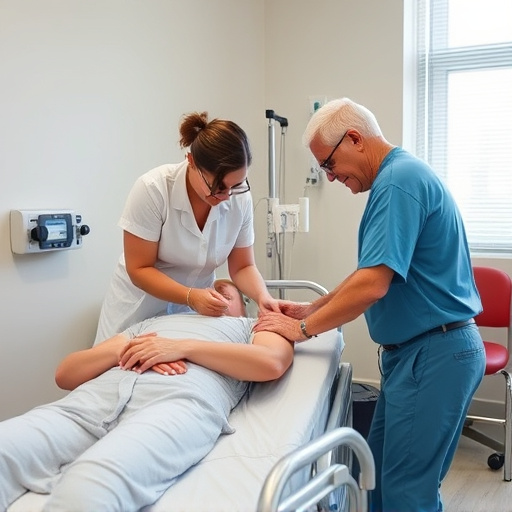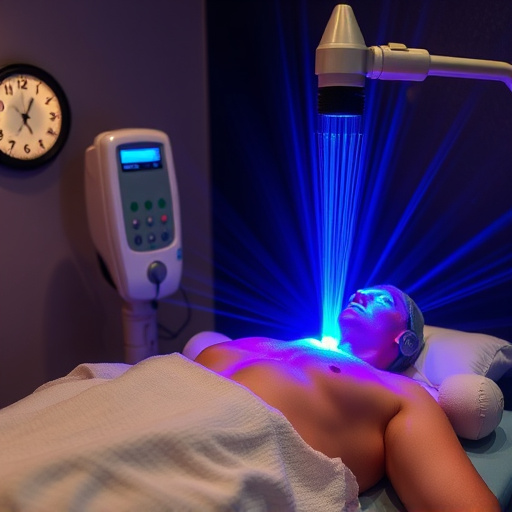Shockwave therapy for plantar fasciitis is a non-invasive treatment using high-energy sound waves to stimulate healing, improve blood flow, and accelerate natural repair mechanisms. Ideal for chronic sufferers, it offers pain relief and improved mobility with minimal downtime. 3-6 sessions over several weeks are common, but severity may require more. Combining shockwave therapy with physical therapy and orthotics provides best results; regular check-ins adjust treatment plans. Post-treatment, patients experience gradual pain reduction, increased flexibility, and return to daily activities without strain.
Plantar fasciitis is a common foot condition causing heel pain. One effective treatment option gaining popularity is extracorporeal shockwave therapy (ESWT). This non-invasive approach uses focused sound waves to stimulate healing.
This article delves into the world of shockwave therapy for plantar fasciitis, exploring how many sessions are typically needed for optimal relief. We’ll guide you through understanding the treatment, determining session numbers based on individual needs, and what to expect during recovery.
- Understanding Shockwave Therapy for Plantar Fasciitis
- Determining the Optimal Number of Treatment Sessions
- Expectations and Recovery After Each Session
Understanding Shockwave Therapy for Plantar Fasciitis

Shockwave therapy for plantar fasciitis is a non-invasive treatment that uses high-energy sound waves to stimulate healing in the damaged tissue of the foot. This innovative approach has gained popularity as an alternative to surgical interventions or prolonged periods of rest. The procedure involves directing focused shockwaves onto the affected area, which can help promote blood flow and encourage the body’s natural repair mechanisms.
For individuals suffering from chronic plantar fasciitis often stemming from car accident injuries or resulting from over-use in active lifestyles, shockwave therapy offers a promising solution. It can be an effective complement to traditional chiropractic treatment and therapeutic exercises, providing relief from pain and improving mobility without the need for extensive downtime.
Determining the Optimal Number of Treatment Sessions

The optimal number of shockwave therapy sessions for plantar fasciitis relief can vary significantly from person to person. Several factors influence this determination, including the severity of the condition, individual response to treatment, and overall health. In general, most patients experience significant improvement after 3-6 sessions, spaced out over several weeks. However, chronic pain management strategies may require additional sessions or a more tailored approach to address underlying causes like lower back pain, which can contribute to plantar fasciitis.
Wellness care professionals often recommend a combination of shockwave therapy and other conservative treatments, such as physical therapy and orthotic inserts, for best results. The goal is not just to alleviate symptoms but also to prevent recurrence. Regular check-ins with your healthcare provider are crucial to assess progress and adjust the treatment plan as needed, ensuring you receive the most effective and efficient shockwave plantar fasciitis relief possible.
Expectations and Recovery After Each Session

After each shockwave treatment session for plantar fasciitis, patients can expect a gradual improvement in their foot pain and overall mobility. The initial sessions may leave some discomfort or mild soreness, which is normal and typically subsides within a few days. Each subsequent visit builds upon the previous one, allowing the body to start healing and reinforcing the damaged tissue.
The recovery process involves a combination of reduced pain, improved flexibility, and an increased ability to perform daily activities without significant strain. Patients are often encouraged to complement these treatments with wellness care practices like physical therapy and therapeutic exercises to expedite recovery and prevent future recurrence.
Shockwave therapy for plantar fasciitis offers a non-invasive, effective treatment option with minimal downtime. The optimal number of sessions typically ranges from 3 to 6, spaced several weeks apart, based on individual response and severity of the condition. Each session can be expected to provide progressive relief, with improved mobility and reduced pain afterward. Following each treatment, patients should allow for adequate recovery time, gradually resuming normal activities as discomfort permits. This structured approach helps ensure the best possible outcomes for managing shockwave plantar fasciitis.














